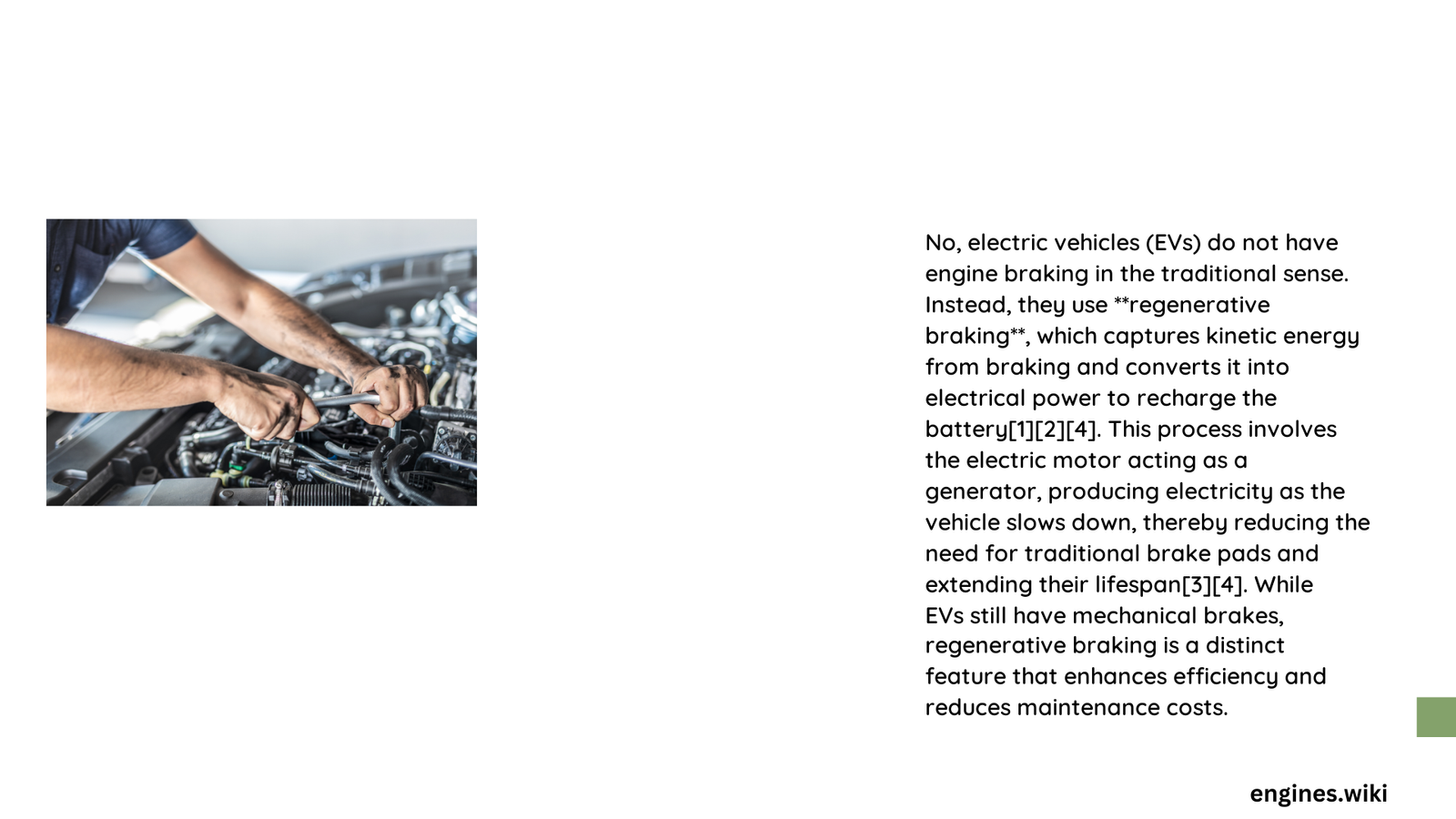Electric vehicles represent a revolutionary approach to automotive braking, fundamentally different from traditional combustion engine vehicles. Unlike conventional cars that rely on mechanical engine compression for slowing down, EVs utilize advanced regenerative braking technology that transforms kinetic energy into electrical energy, providing an innovative solution to vehicle deceleration while simultaneously recharging the battery.
What Makes EV Braking Different?
Do Electric Vehicles Experience Traditional Engine Braking?
Electric vehicles do not experience engine braking in the same mechanical sense as traditional internal combustion engine vehicles. Instead, they employ a sophisticated regenerative braking system that offers unique advantages:
Key Characteristics of EV Regenerative Braking
- Converts kinetic energy to electrical energy
- Reduces brake pad wear
- Extends vehicle range
- Provides smoother deceleration
How Does Regenerative Braking Work?
When an electric vehicle driver releases the accelerator or applies the brake pedal, the electric motor reverses its operation, functioning as a generator. This process creates resistance that slows the vehicle while simultaneously converting motion into electrical energy stored in the battery.
| Braking Method | Energy Recovery | Brake Wear | Efficiency |
|---|---|---|---|
| Traditional Friction Braking | Low (0-10%) | High | Less Efficient |
| EV Regenerative Braking | High (60-70%) | Low | More Efficient |
What Are the Performance Implications?
Energy Recovery Potential
Regenerative braking can recover up to 70% of kinetic energy that would traditionally be lost as heat. This remarkable efficiency translates to:
– Extended driving range
– Reduced energy consumption
– Lower operational costs
Are There Limitations to Regenerative Braking?
While highly effective, regenerative braking does have some constraints:
1. Limited maximum deceleration at high speeds
2. Potential variations in brake pedal feel
3. Dependency on battery charge and temperature
Technical Nuances of EV Deceleration
Electric vehicles typically incorporate a multi-stage braking approach:
– Primary regenerative braking for gradual deceleration
– Supplementary friction braking for emergency stops
– Intelligent energy management systems
Real-World Performance Metrics
Research indicates that EVs with advanced regenerative braking can:
– Reduce brake pad replacement frequency by 50-70%
– Improve overall energy efficiency
– Provide more consistent braking performance
Expert Insights

Professional automotive engineers emphasize that regenerative braking represents a paradigm shift in vehicle energy management. By transforming what was previously wasted energy into a reusable resource, electric vehicles demonstrate a more sustainable approach to transportation.
Practical Considerations for Drivers
Drivers transitioning to electric vehicles should:
– Familiarize themselves with regenerative braking characteristics
– Practice smooth deceleration techniques
– Understand the vehicle’s specific energy recovery mechanisms
Conclusion
Electric vehicles do not have traditional engine braking but offer a technologically advanced alternative through regenerative braking. This system provides superior energy efficiency, reduced maintenance, and a more sustainable approach to vehicle deceleration.
Technical Specifications Summary
- Energy Recovery Rate: 60-70%
- Brake Pad Longevity: Increased by 50-70%
- Additional Range Contribution: Up to 10-15%
References:
1. SAE International Regenerative Braking Report
2. Electric Vehicle Technology Insights
3. International Energy Agency EV Research
